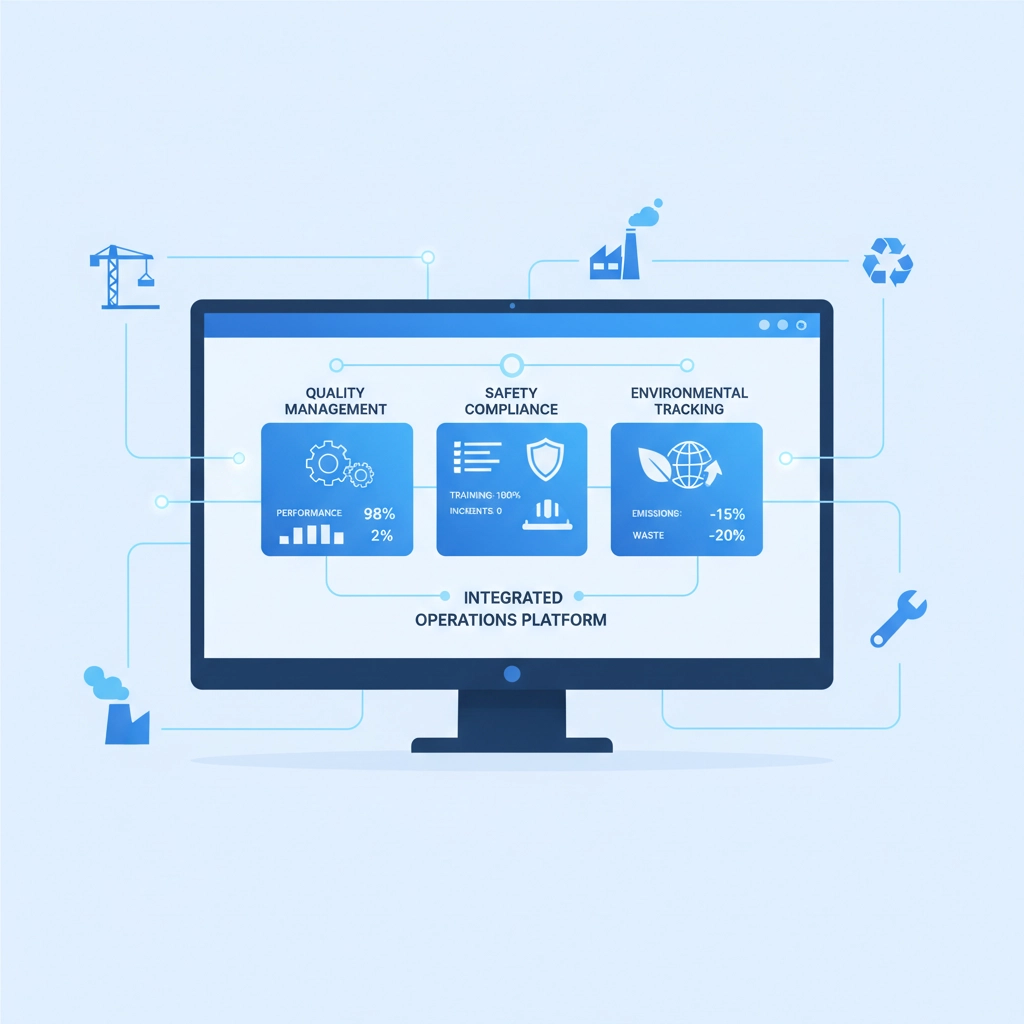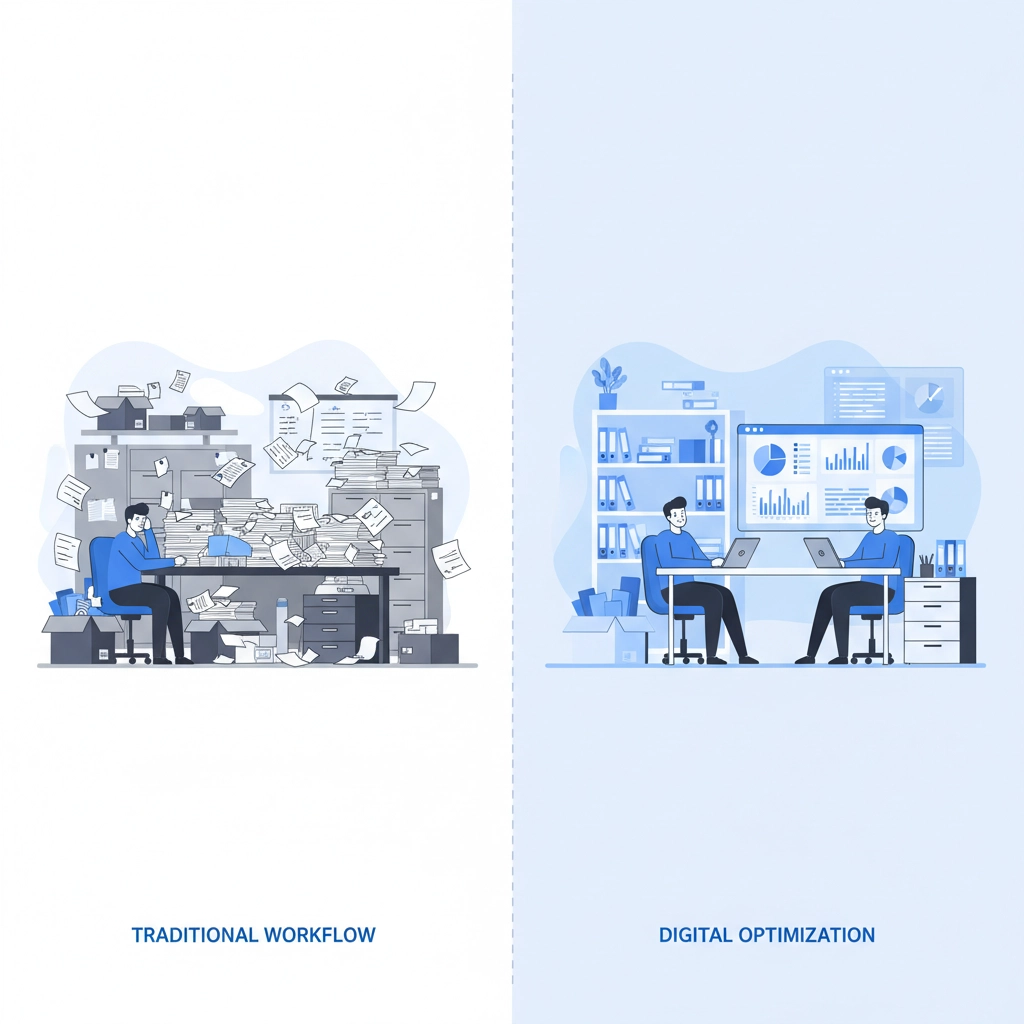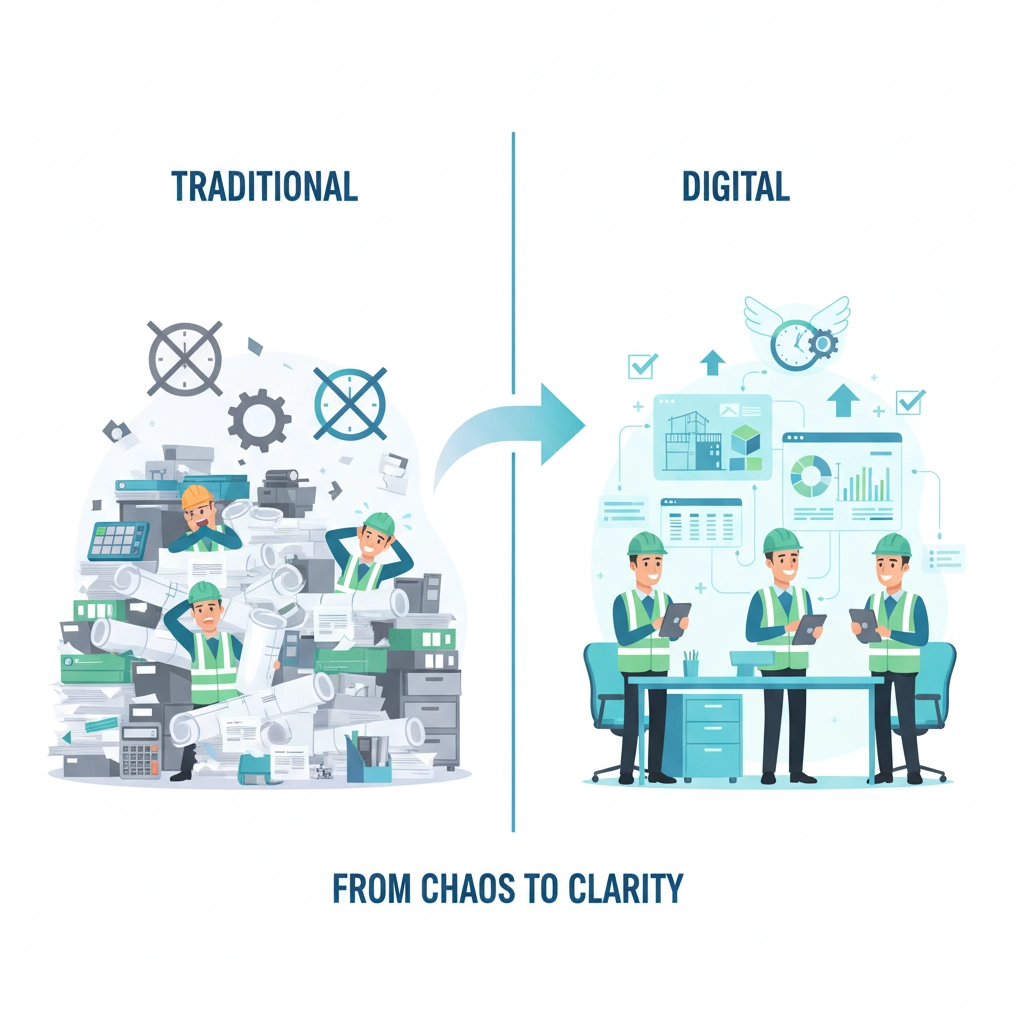ISO Compliance Secrets Revealed: What H&S Consultants Don't Want You to Know!
- Oliver Clayton
- 3 days ago
- 5 min read

Here's the uncomfortable truth: ISO compliance in construction isn't rocket science, but the industry has made it seem that way. While software vendors and consultants profit from complexity, the real "secrets" are surprisingly simple practices that most construction companies completely overlook.
After analyzing hundreds of construction firms' compliance journeys, we've uncovered the myths that keep companies struggling: and the straightforward digital strategies that actually work.
The Myths That Keep Construction Companies Stuck
Myth 1: ISO Compliance Requires Massive Paperwork Mountains
The Reality: Modern construction companies still drowning in paper forms believe they need even more documentation for ISO compliance. This backwards thinking comes from outdated advice that treats compliance like a filing cabinet exercise.
The truth? ISO standards actually favour streamlined, digital processes over paper trails. Digital documentation systems automatically create audit trails, version control, and searchable records that traditional paperwork simply can't match.
Myth 2: Compliance Software Is Only for Large Contractors
The Reality: Small and medium construction firms often assume ISO compliance tools are enterprise-only solutions with enterprise-level price tags. This myth keeps smaller companies manually tracking compliance requirements while their larger competitors automate the entire process.
Digital management platforms now offer scalable solutions that work for teams of 10 or 10,000. The cost of compliance software is typically a fraction of what companies spend on manual processes, rework, and failed audits.

Myth 3: You Need Separate Systems for Different ISO Standards
The Reality: Construction companies pursuing multiple certifications (ISO 9001 for quality, ISO 14001 for environment, ISO 45001 for safety) often implement separate tracking systems for each standard. This creates data silos and multiplies administrative overhead.
The secret? Integrated compliance platforms that handle multiple ISO standards through shared workflows, documentation, and reporting. Your safety incident report can simultaneously feed into quality non-conformance tracking and environmental impact assessments.
Myth 4: Compliance Is a One-Time Project
The Reality: Perhaps the most dangerous myth is treating ISO compliance like a construction project with a clear finish date. Companies invest heavily in initial certification, then let systems decay until the next audit cycle.
Successful construction firms treat compliance as an ongoing operational requirement, not a periodic sprint. Digital tools make continuous compliance monitoring effortless rather than expensive.
Your ISO Compliance Checklist: The Digital Advantage
Ready to cut through the complexity? Here's your actionable checklist for leveraging digital management tools to achieve ISO compliance without the traditional headaches.
Phase 1: Documentation Foundation
✓ Implement Digital Document Control
Choose a platform with automated version control and approval workflows
Migrate critical procedures from paper/Word documents to digital templates
Set up automated notifications for document reviews and updates
Ensure mobile access for field teams who need real-time procedure access
✓ Establish Audit Trail Capabilities
Verify your system logs all document changes with timestamps and user identification
Test the ability to reconstruct any process or decision from digital records
Configure automatic backups that meet ISO evidence retention requirements

Phase 2: Process Automation
✓ Automate Non-Conformance Management
Set up digital forms for incident reporting, quality issues, and improvement opportunities
Configure automatic routing to appropriate personnel based on issue type and severity
Implement corrective action tracking with automatic follow-up reminders
Create dashboards that show trends and prevent recurring problems
✓ Digital Training Management
Upload competency requirements for each role and ISO standard
Set up automatic training reminders based on certification expiry dates
Track completion rates and competency assessments digitally
Link training records directly to personnel files and project assignments
Phase 3: Measurement and Monitoring
✓ Real-Time Performance Dashboards
Configure key performance indicators (KPIs) that align with your ISO objectives
Set up automatic data collection from project management and field operations
Create exception reports that highlight compliance risks before they become problems
Implement trend analysis to demonstrate continuous improvement
✓ Internal Audit Digitisation
Replace paper-based audit checklists with mobile-friendly digital forms
Set up automatic scheduling for internal audits based on risk assessments
Configure finding tracking with automatic follow-up and closure verification
Create management review reports that pull data from all compliance activities

Phase 4: Integration and Scalability
✓ Connect Your Systems
Integrate compliance platform with existing project management software
Ensure data flows automatically between quality, safety, and environmental modules
Set up single sign-on to reduce user friction and improve adoption
Verify mobile functionality for field-based compliance activities
✓ Prepare for Growth
Choose platforms that scale with additional projects, personnel, and locations
Ensure your system can handle multiple ISO standards without data duplication
Plan for integration with customer requirements and supply chain compliance needs
The Software Selection Reality Check
Not all compliance software is created equal, especially for construction environments. Here's what actually matters when evaluating digital solutions:
Mobile-First Design: Your field teams won't carry laptops to capture safety observations or quality issues. If the software doesn't work seamlessly on smartphones and tablets, it won't work in construction.
Offline Capabilities: Construction sites often have limited connectivity. Systems that require constant internet connection create compliance gaps when connectivity is poor.
Integration-Ready: Your compliance platform should connect with existing project management, accounting, and HR systems. Data silos defeat the purpose of digital efficiency.
Industry-Specific Templates: Generic compliance software forces you to build everything from scratch. Look for platforms with pre-configured ISO templates designed for construction workflows.

The Hidden Cost of Manual Compliance
While everyone focuses on software costs, the real expense is manual compliance management. Construction companies typically underestimate these hidden costs:
Administrative Time: Manual document control consumes 15-20% of administrative staff time
Audit Preparation: Companies spend 3-4 weeks preparing for external audits with manual systems
Non-Conformance Response: Paper-based corrective action systems extend resolution time by 40-60%
Training Coordination: Manual training tracking doubles administrative overhead for competency management
Digital compliance platforms typically pay for themselves within 6-12 months through administrative time savings alone, before considering the benefits of improved audit performance and reduced non-conformance costs.
Making the Transition Work
The most successful ISO compliance transformations follow a specific pattern:
Start Small: Begin with one ISO standard or one high-impact process (often non-conformance management delivers quick wins)
Involve Users Early: Field teams and administrative staff who will use the system daily should participate in platform selection and configuration
Plan for Change Management: Digital transformation succeeds or fails based on user adoption, not technical capabilities
Measure Results: Track time savings, compliance improvements, and audit performance to demonstrate value and guide further optimisation
Your Next Steps
ISO compliance doesn't have to be the complex, expensive burden that traditional approaches create. Digital management platforms remove the administrative friction that makes compliance feel overwhelming while providing the documentation and control that ISO standards actually require.
The construction companies succeeding with ISO compliance aren't using secret strategies: they're simply leveraging digital tools that make compliance a natural part of daily operations rather than a separate administrative burden.
Ready to transform your ISO compliance approach? Explore our construction-specific compliance features or schedule a demonstration to see how digital management can simplify your path to certification.
The only secret is that there are no secrets: just better tools and smarter processes that most construction companies haven't discovered yet.

Comments